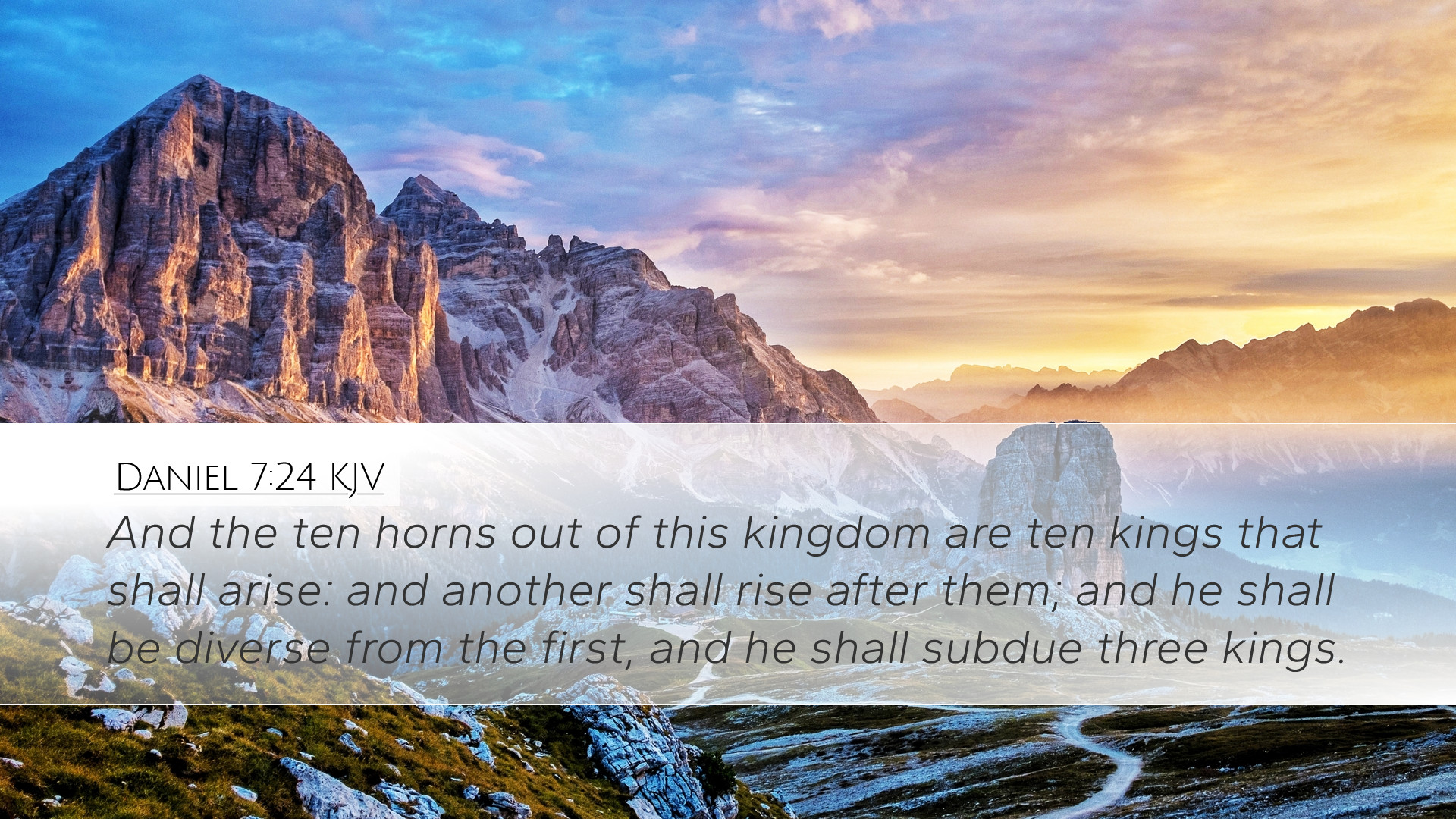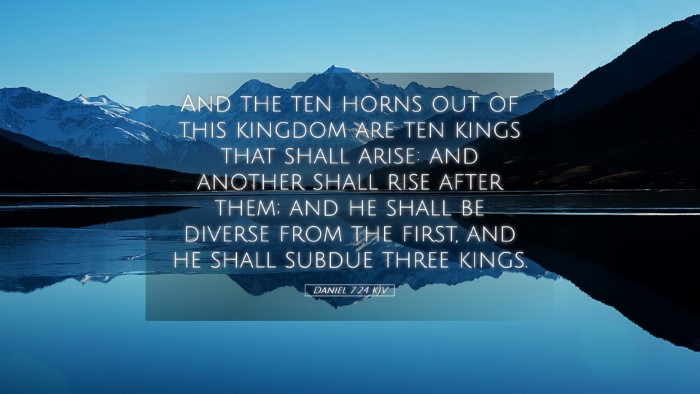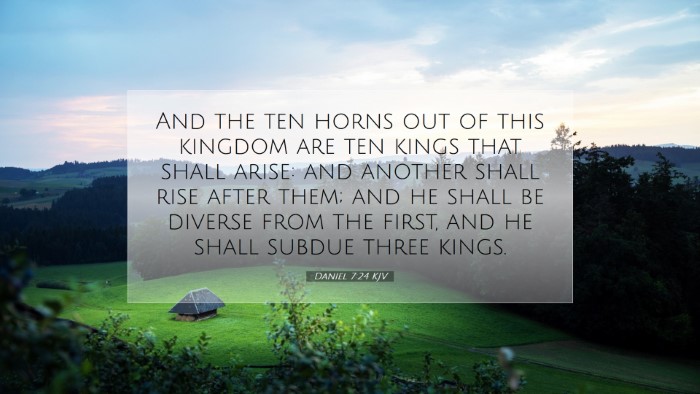Commentary on Daniel 7:24
Overview and Context:
Daniel 7 is a pivotal chapter in the Book of Daniel, positioning itself within the apocalyptic literature that reveals visions concerning future kingdoms and divine sovereignty. In this chapter, the prophet Daniel has a vivid vision of four beasts that represent four kingdoms. Each beast epitomizes a different stage in the succession of empires and their ultimate impact on God's people. Verse 24 specifically addresses the little horn that arises from the fourth beast, providing insight into its nature and prophetic significance.
Verse Analysis:
Daniel 7:24 states: "The ten horns out of this kingdom are ten kings that shall arise: and another shall rise after them; and he shall be diverse from the first, and he shall subdue three kings."
-
The Ten Horns:
The imagery of the ten horns correlates with the notion of ten kingdoms or kings that will emerge from the fourth beast. According to the exegesis of Matthew Henry, these ten horns can be identified with the Roman Empire's fragmentation, symbolizing a period of division and instability. The prophetic implication indicates that these ten kings will rise to power, creating a complex political landscape.
-
The Rise of Another:
The passage introduces a significant figure—often referred to as the little horn—who arises after the ten kings. Albert Barnes elaborates on this point, suggesting that this horn represents a distinct power that will emerge, characterized by its diversity in nature and governance compared to the former kings. This figure is often interpreted as the Antichrist or a precursor to evil powers, capturing the attention of scholars studying eschatology.
-
Diversity from the First:
The phrase “diverse from the first” emphasizes that this little horn will possess unique attributes that set it apart from the preceding kings. Adam Clarke highlights that this distinction may relate to both its method of rule and religious inclination, suggesting a potential shift toward more oppressive and blasphemous governance.
-
Subduing Three Kings:
The latter part of the verse indicates that this little horn shall subdue three kings. This act of conquest not only affirms the authority of the little horn but also signifies a significant power struggle among the ruling entities. Henry notes that this imagery illustrates the method of the little horn's rise to prominence, depicting a violent and treacherous ascendancy to power, which aligns with common traits attributed to tyrannical figures throughout history.
Theological Implications:
The theological implications of this verse are profound. The verse serves as a reminder of God's ultimate sovereignty over human affairs and kingdoms. It draws attention to the transient nature of political power and the corrupting influence that can arise when leaders abandon righteous governance. Furthermore, it presents a prophetic warning to believers about the nature of future leadership and the challenges they may face as they seek to uphold faith amid tyranny.
Application for Pastors and Theologians:
Pastors and theologians can draw several practical applications from this verse. First, the description of the little horn serves as a call to vigilance. Leaders must remain aware of the potential for rising powers that may disguise themselves under the facade of progress or righteousness but ultimately lead society astray. Moreover, the reminder that God presides over human history encourages believers to maintain faith and hope in God's ultimate plan, regardless of the chaos that may ensue from political strife.
In a contemporary context, the lesson from Daniel 7:24 calls for discernment regarding global and local leaders and policies that may lean towards tyranny or oppression. The ensuing dialogue surrounding ethical decision-making in the light of this passage can enrich congregational teachings and theological discourses.
Conclusion:
Daniel 7:24 is a rich and multifaceted verse that prompts deep consideration of eschatological themes, the nature of political power, and God's overarching authority. By synthesizing insights from historic commentaries, modern readers can gain a deeper understanding and apply biblical lessons relevant to their current contexts. The image of the little horn serves as both a warning and a testament to the sovereignty of God in the face of human ambition, encouraging persistent faith amidst inevitable trials.


